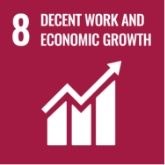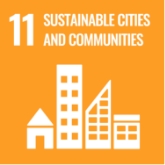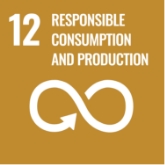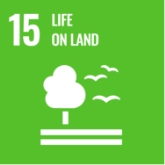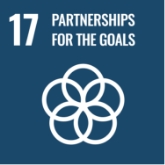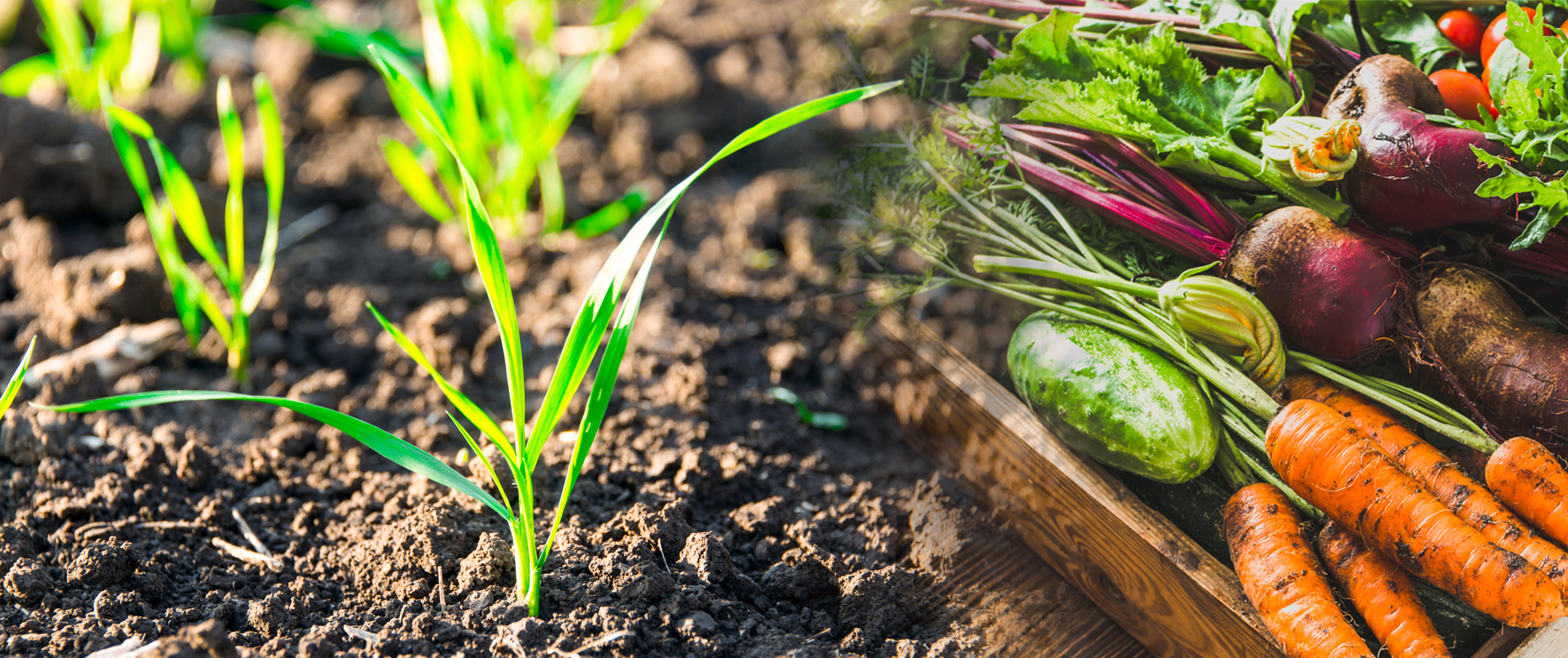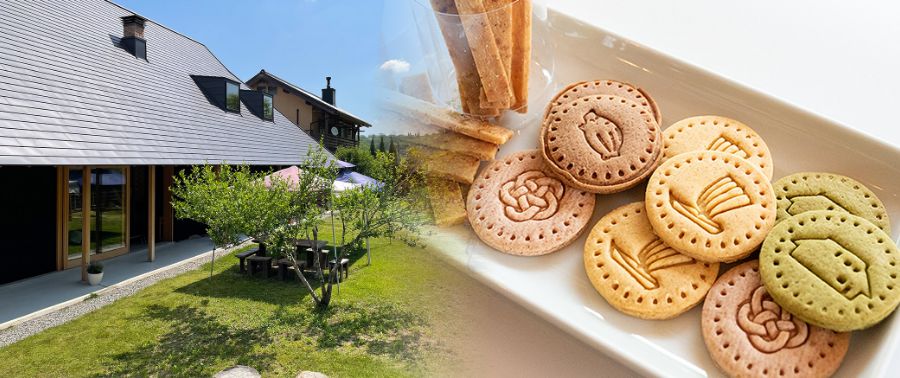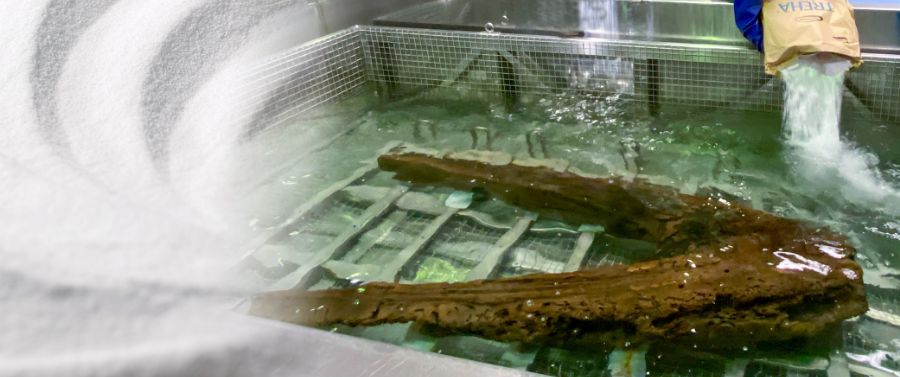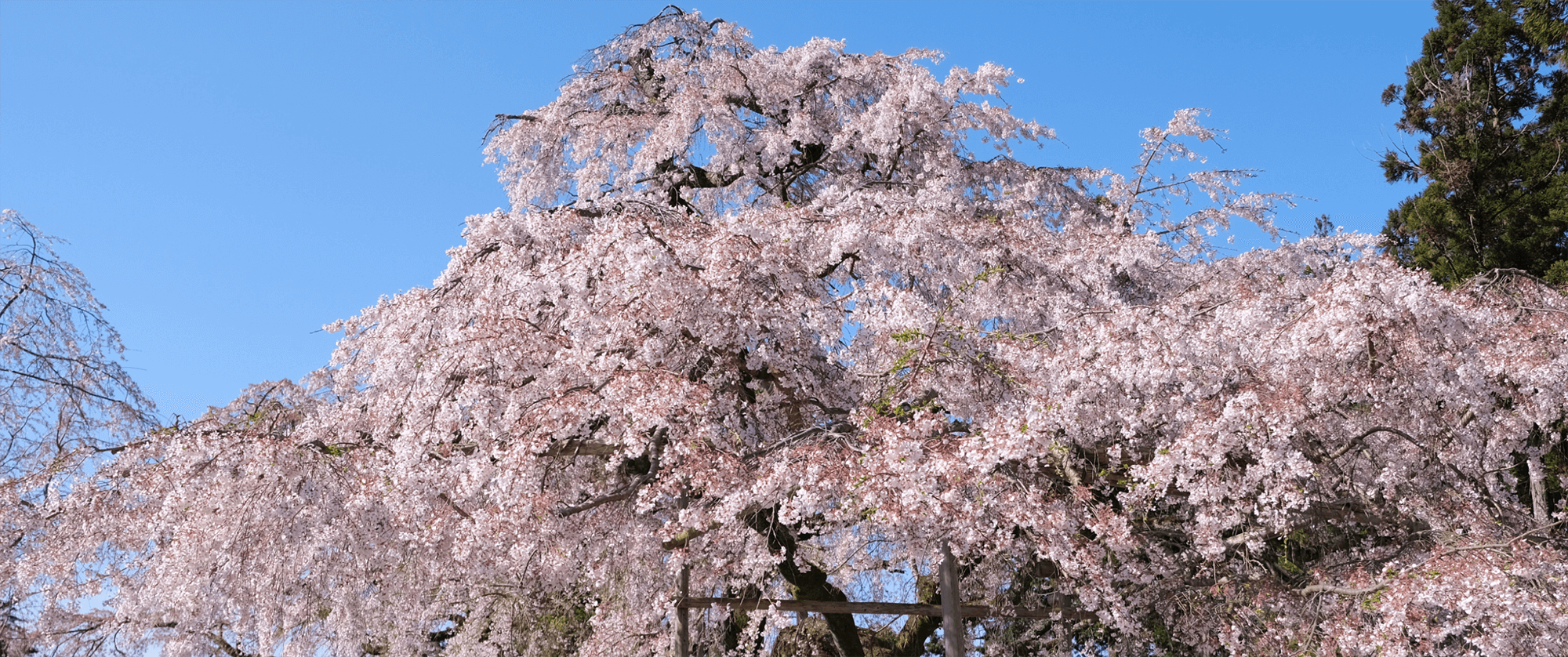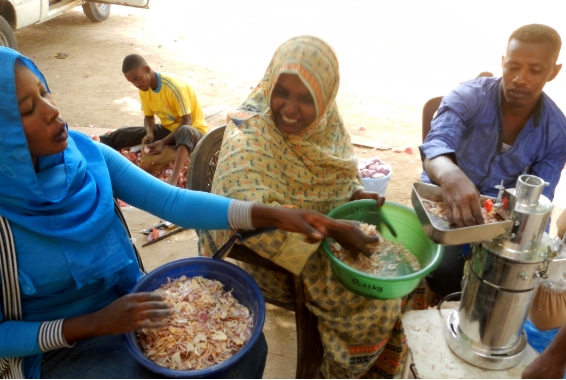
Sustainable Stories
Nagase Viita's WEB Magazine
08story
March 05, 2024
Reviving Japan's Traditional Indigo Culture in Modern LifeCreating a Place for Indigo Therapy, “Aijiba (藍治場),” to Heal the Mind and Body
The “Japan Blue,” also known as “Ai” (indigo plant), exhibits a captivating allure that resonates with people worldwide. Throughout history, indigo has been prized not only as a dyeing material but also for its detoxifying, calming, and wound-healing properties. Mr. Yoshihiro Mitani, an advocate for indigo plant usage, operates pharmacies in Tokushima Prefecture, a renowned region for traditional indigo production. He follows ancient wisdom, integrating these beneficial plants into various aspects of life, including food, to promote mental and physical well-being.
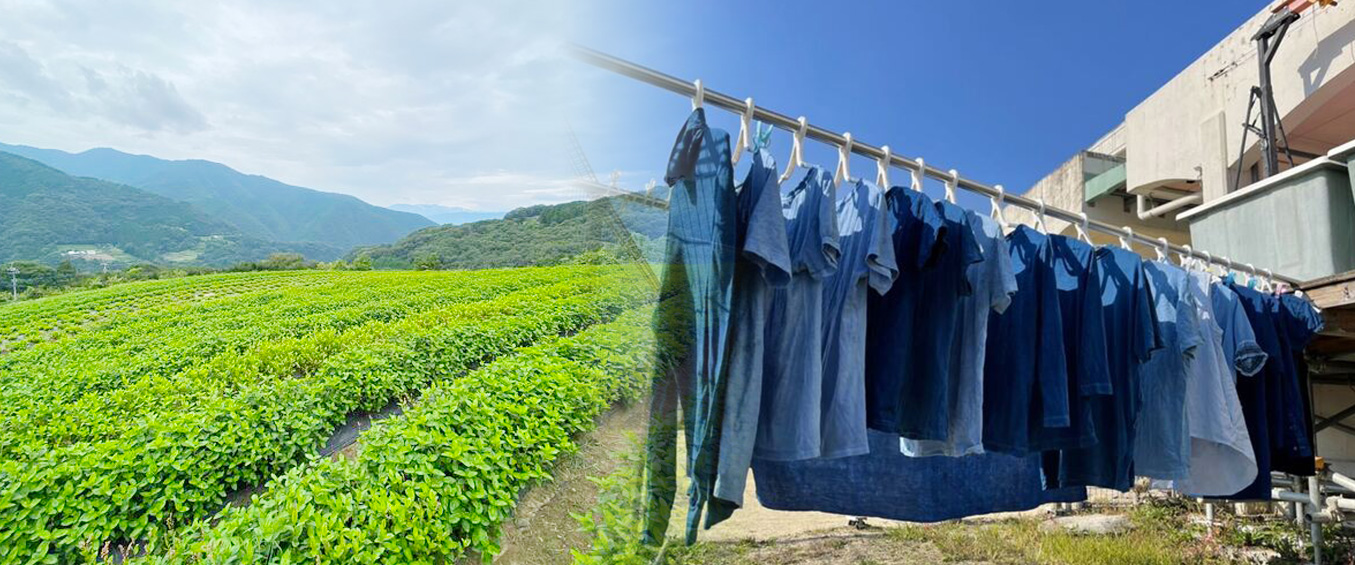
Proposing a Lifestyle Integrated with Edible Indigo
The Yoshino River basin in Tokushima Prefecture, formerly known as Awa Province, has been a prominent indigo-producing region since the Edo period and continues to proudly maintain its position as a leading producer of indigo in Japan today.
Indigo-dyed clothing is admired for its visual appeal and various benefits, including repelling insects, preventing infections, and reducing odor. It is said that during the Muromachi period, indigo-dyed undergarment was worn for the same purpose but on different occasions, such as beneath armor as well as farming attire. Additionally, Awa's indigo merchants were known to carry indigo in their pockets during travels, ingesting it when experiencing stomach ailments, leading to the saying, "Indigo merchants know no illness."
Thus, indigo has been recognized for centuries not only as a dye but also as a medicinal substance.
Indigo-dyed clothing is admired for its visual appeal and various benefits, including repelling insects, preventing infections, and reducing odor. It is said that during the Muromachi period, indigo-dyed undergarment was worn for the same purpose but on different occasions, such as beneath armor as well as farming attire. Additionally, Awa's indigo merchants were known to carry indigo in their pockets during travels, ingesting it when experiencing stomach ailments, leading to the saying, "Indigo merchants know no illness."
Thus, indigo has been recognized for centuries not only as a dye but also as a medicinal substance.
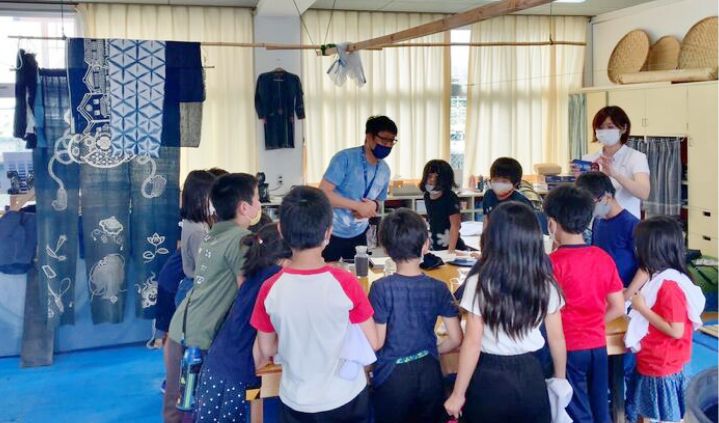
“Through our products and activities at the workshop, we advocate for a lifestyle immersed in indigo. If I encapsulate this concept in a single phrase, it would be 'Aijiba' (藍治場, a place for indigo therapy), inspired by the term 'Tojiba' (湯治場, a place for hot spring therapy). In addition to introducing the inherent medicinal properties of indigo, we aspire to promote mental and physical well-being by offering a serene and healing experience through interactions with beautiful indigo-dyed fabrics and indulging in indigo tea," explains Mr. Mitani.
Energizing People and Communities with the Power of Indigo
Why did Mr. Mitani get involved with Indigo while running pharmacies? This stems from his over 30 years of experience as a pharmacist, during which he has interacted with numerous patients.
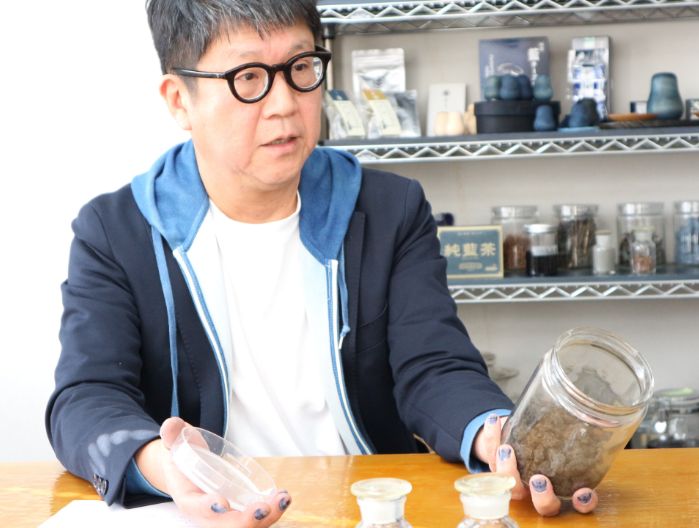
"With the given situation, I've witnessed instances where patients, despite consuming medications without relief, notably improved their chronic symptoms by actively modifying their diet and engaging in exercise.
Through observing numerous cases like these, I've developed a profound appreciation for the significance of lifestyle adjustments and the importance of nutrition."
Driven by a growing concern over the rise in diabetes cases, Mr. Mitani initiated a campaign to promote vegetable consumption. In 2010, he started a store specializing in juices and snacks crafted from pesticide-free produce. Through this venture, he crossed paths with local indigo farmers, who taught him about the historical use of indigo for medicinal and culinary applications. Intrigued, he began his own research, and he became increasingly drawn to the remarkable efficacy and allure of indigo.
Furthermore, Mr. Mitani had a longstanding desire to showcase Tokushima's appeal to a broader audience.
"Having spent over a decade in Tokyo since my college days, I deeply felt the lack of awareness about Tokushima beyond the prefectural borders. I was determined to contribute to the local community upon returning to my hometown. As a pharmacist, I aimed to contribute to the well-being of the local residents. As a remarkable specialty of Tokushima, Indigo perfectly aligned with these two aspirations."

"When fermenting the indigo leaves to create sukumo, it's fascinating to discover how vibrant colors can be achieved through the power of nature. I'm amazed by the richness of the experiential knowledge accumulated by our ancestors," he explains.
"Indigo has a mysterious calming effect; even when feeling frustrated, stepping into the dyeing area soothes the mind. In today's busy and stress-filled society, I believe it's essential for us to incorporate such natural healing properties actively."
Indigo is also used in the treatment of developmental disorders outside Japan. Its ability to heal our fatigued bodies and minds in the modern world has gained attention, and the worldview of indigo continues to expand as it is integrated into various aspects of our lives, contributing to overall well-being.
Safeguarding Producers for the Continuation of Traditional Culture

BON ARM's indigo is cultivated by nine contracted farmers who comply with specific requirements within Mima City, Tokushima Prefecture. These requirements include pesticide-free farming and designated areas and locations, which are regulated by the "Tokushima Version GAP Certification System" (Tokushima GAP certification), ensuring the production of indigo that meets both the safety and quality standards set by BON ARM and the "Tokushima Agricultural Products" (An2 GAP) certification. In particular, indigo intended for consumption is exclusively sourced from fields located at a 400-meter altitude, recognized as part of the "Nishi-Awa Steep Slope Land Agriculture System," a designated World Agricultural Heritage Site.
Harvesting takes place during the scorching heat of midsummer, especially on steep mountain slopes at high altitudes, where mechanization is unsuitable, and water management poses significant challenges. Manual labor remains the fundamental approach because vehicles cannot access these areas.
"Similar to the broader challenges in Japanese agriculture, indigo farmers also struggle to earn adequate income for their labor, which hampers growing numbers of producers. To ensure the continued inheritance of the traditional culture of indigo dyeing to the next generation, it's imperative to protect these producers while simultaneously pursuing higher-value-added product development.
We've set strict quality standards, particularly for edible indigo, allowing us to purchase from contracted farmers at relatively higher prices. However, if utilizing high-value-added products, such as those for consumption and medicinal purposes, becomes more widespread, it will lead to an overall increase in income for all indigo farmers," explains Mr. Mitani.
Mr. Mitani strongly believes that providing economic support to the producers is crucial to continuing the tradition of the indigo industry and conveying the fascinating fermentation technology and medicinal appeal of indigo. While exploring various methods to communicate the greatness of indigo, he recognizes the necessity of supporting the livelihoods of producers to sustain the indigo heritage.
Harvesting takes place during the scorching heat of midsummer, especially on steep mountain slopes at high altitudes, where mechanization is unsuitable, and water management poses significant challenges. Manual labor remains the fundamental approach because vehicles cannot access these areas.
"Similar to the broader challenges in Japanese agriculture, indigo farmers also struggle to earn adequate income for their labor, which hampers growing numbers of producers. To ensure the continued inheritance of the traditional culture of indigo dyeing to the next generation, it's imperative to protect these producers while simultaneously pursuing higher-value-added product development.
We've set strict quality standards, particularly for edible indigo, allowing us to purchase from contracted farmers at relatively higher prices. However, if utilizing high-value-added products, such as those for consumption and medicinal purposes, becomes more widespread, it will lead to an overall increase in income for all indigo farmers," explains Mr. Mitani.
Mr. Mitani strongly believes that providing economic support to the producers is crucial to continuing the tradition of the indigo industry and conveying the fascinating fermentation technology and medicinal appeal of indigo. While exploring various methods to communicate the greatness of indigo, he recognizes the necessity of supporting the livelihoods of producers to sustain the indigo heritage.
Creating Places for Elderly Community Engagement
The "Aishokunin" online shop offers a diverse range of products, including caffeine-free indigo tea, herbal tea, langues de chat (French butter cookies) delicately tinted with a hint of blue, and indigo-dyed tea utensils. These items are also sold in souvenir shops throughout Tokushima Prefecture and have received positive feedback from tourists both domestically and internationally.
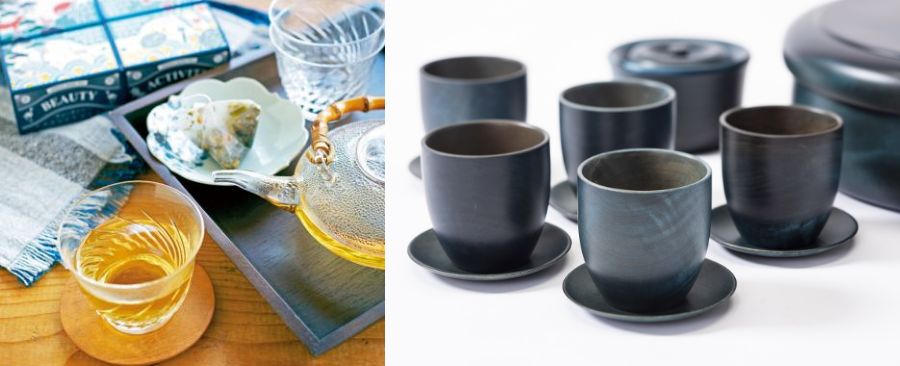
Additionally, Mr. Mitani has a well-defined vision for his future projects. "I aim to develop cosmetics using both indigo and herbal ingredients. Indigo contains abundant components beneficial for skincare, such as moisturizing and antioxidant properties.
Instead of merely selling our own manufactured cosmetic products, I envision a model that promotes local production and consumption. We plan to involve community members by offering them the opportunity to craft their own skincare items, such as toners and soaps," he elaborates.
For instance, some retirees spend more time at home among the patients who regularly visit the pharmacy. We envision providing them with an environment where they can collaborate. This collaboration would include various tasks, from cultivating indigo to developing products, planning packaging and branding, manufacturing, and selling. Our primary aim is to create fulfilling work opportunities within the local production and consumption framework.
By establishing a space where elderly patients can actively engage, we aim to contribute to the revitalization of the community and the well-being of its members.
Instead of merely selling our own manufactured cosmetic products, I envision a model that promotes local production and consumption. We plan to involve community members by offering them the opportunity to craft their own skincare items, such as toners and soaps," he elaborates.
For instance, some retirees spend more time at home among the patients who regularly visit the pharmacy. We envision providing them with an environment where they can collaborate. This collaboration would include various tasks, from cultivating indigo to developing products, planning packaging and branding, manufacturing, and selling. Our primary aim is to create fulfilling work opportunities within the local production and consumption framework.
By establishing a space where elderly patients can actively engage, we aim to contribute to the revitalization of the community and the well-being of its members.
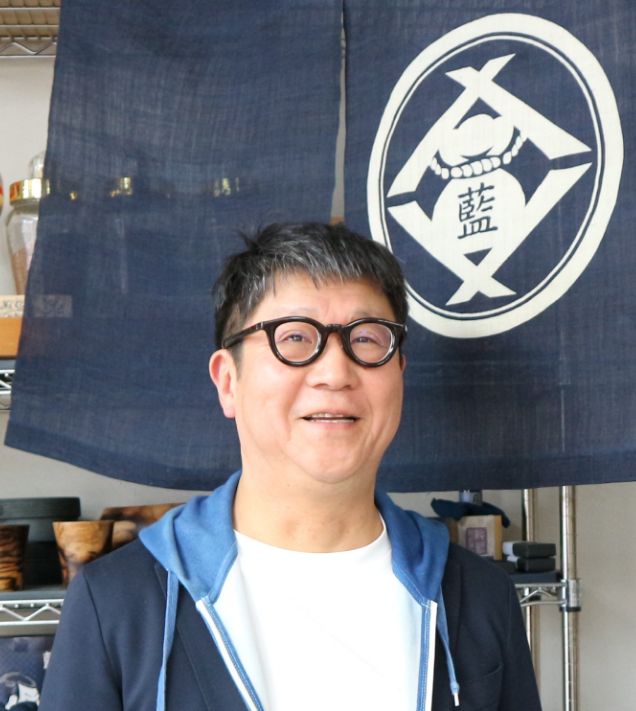
"Even in simple tasks, working and finding happiness through one's job is crucial. Going outside, being physically active, and interacting with others adds vitality to life. Finding joy in helping others and utilizing the wisdom and experience accumulated over the years is fulfilling for the elderly. This could serve as a model case where local production and consumption contribute to well-being," reflects Mr. Mitani.
BON ARM utilizes the indigo dye that Tokushima proudly presents to the world. It is fair to say Mr. Mitani aims for a true sense of "Aijiba (a place for Indigo therapy)" by embodying a place to achieve a healthy mind and body while working surrounded by indigo. We genuinely hope that the culture of indigo, filled with the wisdom of our ancestors, continues to promote lively and healthy lives for generations to come. Mr. Mitani's efforts will continue to flourish in the future.
- ■Official website for BON ARM Co., Ltd. (Japanese): https://www.bon-arm1.com/
- ■Official website for Aishokunin (Japanese): https://www.aisyokunin.com/
 BON ARM Co., Ltd.
BON ARM Co., Ltd.
- Sustainability Initiatives:
- ● Incorporating the benefits of indigo into daily life and contributing to people's health (well-being) through edible indigo products.
- ● Promoting community revitalization through products and events using locally-produced indigo, the region’s specialty.
- ● Integrating local-based production and consumption with the community's well-being through producing local-based cosmetics and a vibrant and enjoyable workplace for the elderly.
- ● Conducting indigo trade at prices that fairly reflect the labor involved to safeguard the livelihoods of producers. Supporting sustainable indigo cultivation also contributes to the preservation of traditional culture.
- ● Initiatives and product development that add value to indigo cultivated without pesticides (certified under the Tokushima Version GAP Certification System) and within the registered area of the "Nishi-Awa Steep Slope Land Agriculture System" demonstrating consideration for both people's health and the environment.

